Aquatic Invertebrates
Media
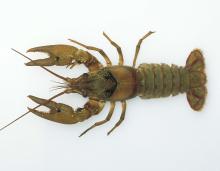
Species Types
Scientific Name
About 38 species in Missouri
Description
Crayfish are freshwater aquatic invertebrates that look a lot like small lobsters, to which they are related. There are about 38 species of crayfish in Missouri.
Media
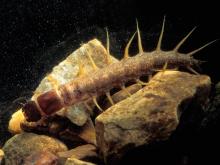
Species Types
Scientific Name
Chauliodes, Neohermes, and Nigronia spp. (in eastern US)
Description
Fishfly larvae look a lot like their cousins the hellgrammites, but they lack cottony or hairy gill tufts along the abdomen, and they have 2 short, fleshy tails at the hind tip.
Media
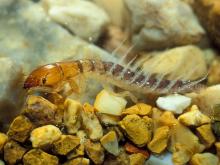
Species Types
Scientific Name
Sialis spp.
Description
Alderfly larvae look a lot like their cousins the fishflies, but instead of having pairs of fleshy tails, they have only a single tail pointing straight back.
Media

Species Types
Scientific Name
About 1,500 species in North America north of Mexico
Description
The aquatic larvae of caddisflies are famous for building portable, protective cases out of local materials, including grains of sand, bits of leaves and twigs, and other debris. The adults are mothlike.
Media
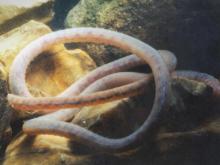
Species Types
Scientific Name
Tubifex spp. and other aquatic tubificid annelids
Description
Tubificid worms, as a group, include the tubifex worms that aquarists feed to their pet fish. These segmented worms are related to earthworms and like them are detritus eaters.
Media

Species Types
Scientific Name
Dugesia, Planaria, and other genera
Description
Unlike their parasitic cousins in the flatworm group, turbellarians, or planarians, are tiny carnivores or detritus-eaters that glide smoothly across submerged leaves and other objects.
Media

Species Types
Scientific Name
Podura aquatica
Description
In early spring, clusters of water springtails float on the surface of quiet waters, on muddy banks, and on protruding objects. Adults are bluish gray with reddish appendages.
Media

Species Types
Scientific Name
Lacunicambarus ludovicianus (syn. Cambarus ludovicianus)
Description
The painted devil crayfish is a burrowing lowland species. In Missouri, it is known from only a few locations in the Bootheel. Its overall color is olive green to blue, with reddish and cream markings.
Media
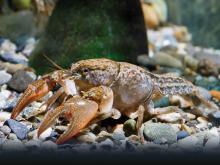
Species Types
Scientific Name
Creaserinus fodiens (formerly Fallicambarus fodiens)
Description
The digger crayfish is heavy-bodied, reddish tan, with a pale, iridescent stripe along the midline of the abdomen and short, broad pincers. In Missouri, it is known from only a few locations, mostly in southeastern counties.
Media
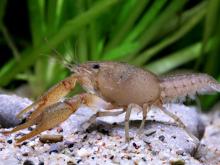
Species Types
Scientific Name
Procambarus viaeviridus
Description
Adult vernal crayfish are rusty red with a blackish wedge-shaped central stripe along the length of the abdomen. In Missouri, this species occurs only in our southeastern swamps and is usually only seen in February and March.
See Also
About Aquatic Invertebrates in Missouri
Missouri's streams, lakes, and other aquatic habitats hold thousands of kinds of invertebrates — worms, freshwater mussels, snails, crayfish, insects, and other animals without backbones. These creatures are vital links in the aquatic food chain, and their presence and numbers tell us a lot about water quality.





















